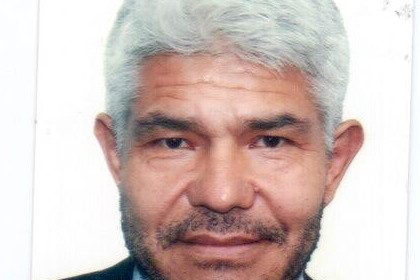Strictly speaking, Spain has not a public bank, although it did have. The privatisation of Argentaria in the 90s ended with a process of liberalization and privatisation of the Spanish banking sector, thus subsuming it in the Banco Bilbao-Vizcaya, a conglomerate of financial institutions such as the Mortgage Bank, Banco Exterior de Spain or the Industrial Credit Bank.
The convergence criteria of the Economic and Monetary Union, the trend towards privatisation of other strategic sectors -energy, transport- the notably difficult balancing of public accounts led to the complete privatisation of the Spanish banking sector. However, by their nature, savings banks, which were not strictly subject to government control, survived this privatisation drive keeping intact their institutional structure for more than a decade. Until the beginning of the financial crisis of 2008 and its subsequent conversion to private entities.
The restructuring of the Spanish financial system, affecting 50% of it, through mergers, acquisitions and divestitures of entities, finds its followers in the process of birth of Bankia, its subsequent restructuring and nationalization and its eventual privatisation.
Bankia was not a private bank
To understand this process, we must start by noting that Bankia was conceived as a complex financial structure based on a model called "Institutional Protection System" (SIP) or as it is popularly called, a "cold fusion". The SIP are forms of merger in which financial institutions belonging to the same do not lose their own legal personality, but retain its own statutes, regulations and governing bodies. These entities create a new society (SIP) that will carry out their banking business. The share of each entity in the new society is made according to its own specific weight and they have different shares of the capital.
In the present case, Bankia is the result of the merger of the banking business of seven savings banks. Caja Madrid, Bancaja, Caja de Canarias, Caja Ávila, Caja Laietana, Caja Segovia and Caja Rioja decided to create Banco Financiero y de Ahorros in 2010. The composition of BFA capital situates CajaMadrid as the leading institution with 52.06% of the capital, followed by Bancaja with 37,70% and the other savings banks. It is important to note that at the time of the creation of the SIP, the savings banks remained public entities, with governing bodies present elected assemblies with the participation of regional parliaments, assemblies of depositors, trade unions representatives, social organizations and municipalities with which the savings banks did business. That is, the savings banks, which came to represent 51% of the Spanish financial system, were under public control, with statutory objectives related to economic and social development of the territories concerned. Therefore the shareholders of BFA were public and subject to public control of parliaments and regional assembly entities. Here it should be noted that municipalities and communities are also part of the State.
In the process of structuring, BFA ?we insist, owned 100% by public savings banks, created a subsidiary, Bankia, in which they concentrated their profitable banking business, with the intention that a portion of their capital would be placed on the stock market. The fact of the IPO of Bankia is determined by one of the key features of savings banks: as founding entities, not corporations, savings banks could not access increases in capital via shareholders. The issue of financial instruments with a quasi-capital character, as subordinated debt and preference shares, was unattractive to investors because it prevented the exercising of voting rights at meetings thereof.
The economic crisis arrived and for the recapitalization needs of the organizations, there were only two options: either establish corporations that were allowed to raise capital through the stock markets, or issue instruments considered as "quasi-equity" because of their permanence and risk characteristics and placing them in the market, being aware that any large investor would not consider them attractive. The boards of savings banks chose two ways: the creation of Bankia as a listed entity, and the issue of preferential shares to be placed between savers and small investors through a network of sales offices.
With financially very questionable results at that time, as afterwards various audits have been commissioned to detail, Bankia definitively went public during the summer of 2011, leaving floating -in financial markets- about 50% of its capital. The rest remained in the hands of BFA, that is, under the control of the (public) Savings Banks. Therefore, the majority shareholder of Bankia was BFA with 52%, , which in turn is owned by the seven savings banks.
Until the day of his intervention by the FROB, majority control of Bankia was therefore public, and the ultimately responsibility for the entity has been the savings banks which, in turn, responded to the institutions in their respective autonomous regions.
The problem arose in BFA, not in Bankia
The problem that led to the departure of Rodrigo Rato, the bailout, and the subsequent takeover by the FROB was due to a mismatch in the accounts of BFA and not of Bankia. Problems with institutional audits happened because there was a mismatch in the value assigned to the participation of BFA Bankia. According BFA, the value of that 45% was 12 thousand million Euros. According to the audit, it was 8 thousand million (which was its book value). The difference of 3.5 thousand million meant that the accounts of BFA should have picked up that loss of value -from 12,000 to 8,500 million- and that meant that BFA had to make a loss in 2011.
Since capital of BFA -the capital agreed by the constituent savings banks at its institution- was 3,500 million Euros, if they had assumed that loss, the company ran out of equity, that is, the "shares" of the savings banks in BFA was worth zero, which meant the bankruptcy of the entity. One of the possible solutions -and which ended up being chosen- was that the FROB preference shares injected into BFA in 2010 were transformed into shares; that is to say, in capital.
The FROB, the financial system's recapitalization fund, BFA had injected in the amount of 4,500 million Euros as preferred (a type of shares who have no voice or vote), convertible into shares if necessary. It is the decision that the new president of Bankia and BFA has taken today.
There is then a double movement. On one hand, capital that has been put into the savings banks has disappeared -to absorb the differential loss between 12,000 million Euros and 8,500 million- and is reduced to zero. On the other hand, the FROB's 4,500 million preference shares have been converted into ordinary shares with voting rights. Thus, the banks lose all control of BFA and the state, now through the FROB, rather than through the savings banks, retains full control, FROB being the owner of all new ordinary shares. By taking 100% of the capital of BFA, the State, through FROB, remains the largest shareholder of Bankia, as it controls 100% of BFA, which in turn controls 52% of Bankia.
The conclusion of this movement was, in the opinion of this author, that the rescue of Bankia did not mean nationalization, since at that time it was still publicly traded equity. What happened was a change of control of BFA, which no longer belongs to Cajamadrid and the other six savings banks, and now belongs to the FROB. It is a transfer of control from the regional and municipal authorities to central government. That is, from a state institutions to others who are also the State.










